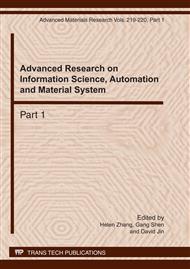p.1077
p.1081
p.1085
p.1089
p.1093
p.1097
p.1101
p.1105
p.1109
SOM and RBF Networks for Eddy Current Nondestructive Testing
Abstract:
Eddy current testing is a popular nondestructive testing (NDT) technology with a solid theoretical foundation. This paper presents a new crack test scheme which uses a self-organizing maps (SOM) network and a radial basis function (RBF) network to process the crack feature signals in eddy current NDT. And Fisher ratio method is adopted to optimize the RBF network centers and simplifies the network structure. The validity of this crack detection algorithm is verified by an experiment in which the wave signals of different crack locations and depths are acquired from the simulations and used as the training and testing samples. Finally, the assessment of the network’s accuracy is performed and the result is satisfactory.
Info:
Periodical:
Pages:
1093-1096
Citation:
Online since:
March 2011
Authors:
Price:
Сopyright:
© 2011 Trans Tech Publications Ltd. All Rights Reserved
Share:
Citation:


